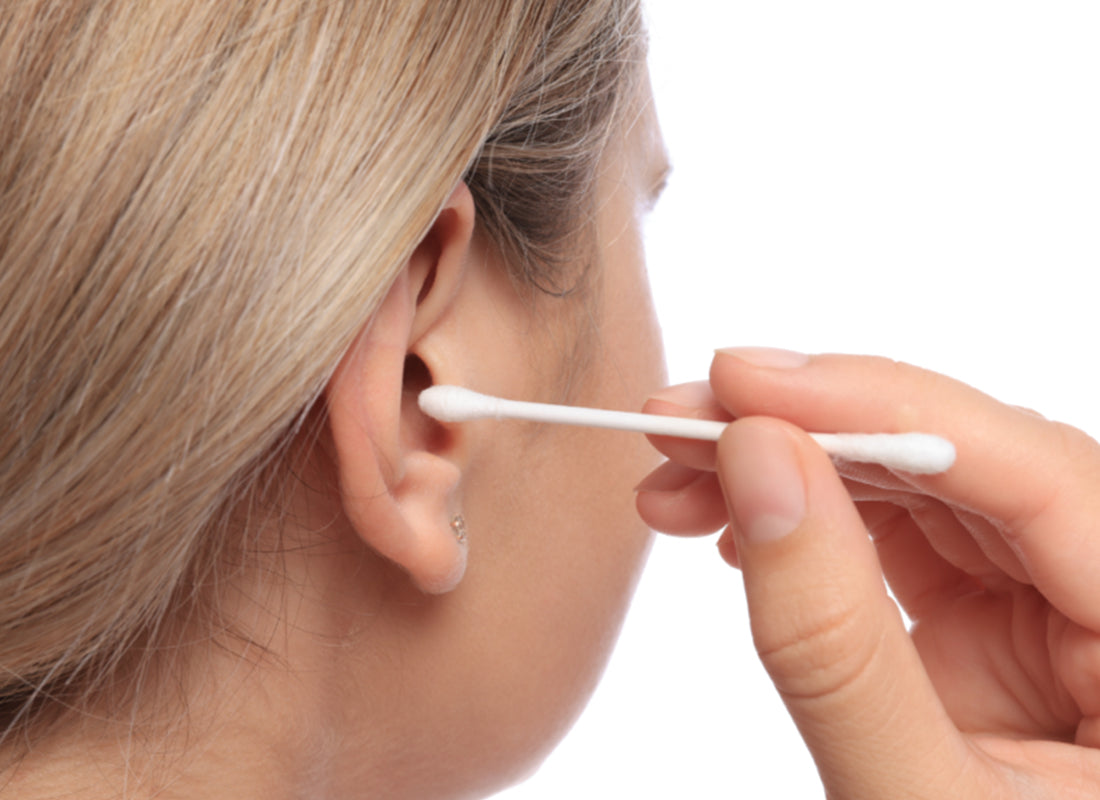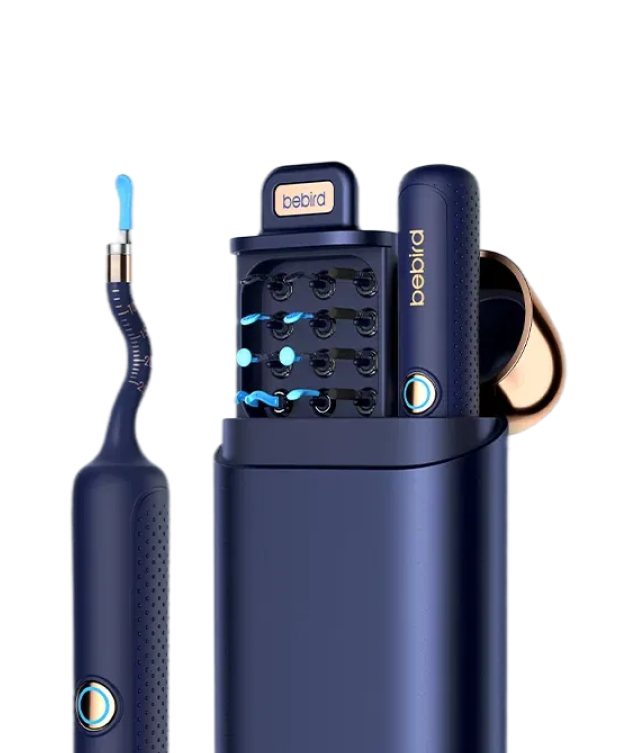When ear wax accumulates inside the ear canal, it can be rather painful. It can not only irritate you, but it might also result in interfere with hearing. For this reason, you should get the ear wax removed. You can also check up with your doctor or a hearing specialist for an ear examination.
One of the most searched queries about ear wax is, can ear wax cause Tinnitus? The short answer is yes. The prolonged accumulation of ear wax can cause Tinnitus and, eventually, hearing loss.
So, let us see what Tinnitus is and its relation with earwax. We will also share how to treat it at home and with professional help.
Table of Contents
- Part 1: What is Tinnitus?
- Part 2: Can Ear Wax Cause Tinnitus?
- Part 3: How do I Know if I Have Ear Wax Causing Tinnitus?
- Part 4: How to Remove Ear Wax?
- Part 5: FAQs
Part 1: What is Tinnitus?
The sound you hear in the head without any external source is Tinnitus. You can hear different kinds of sounds. Some people say they feel a bell ringing, some whistling or buzzing.
However, all these sounds do not originate outside but within the ear. It can be in both ears or even in one. Also, most people have this sound continuously, while some have it on and off.
Types of Tinnitus
Tinnitus is very common and can be found in many people. It becomes sometimes difficult to identify which type of tinnitus the patient has. Nevertheless, Tinnitus will likely fall in the following three categories.
-
Subjective Tinnitus: In subjective tinnitus, no one except you hears the sound. It is the most common type of tinnitus.
-
Objective Tinnitus: It is not common and occurs due to medical conditions like high blood pressure. A doctor can detect objective tinnitus during ear examination as it is audible in a sensitive microphone or stethoscope.
-
Pulsatile Tinnitus: If you hear a sound life flowing of liquid or roaring, this rhythmic sound is pulsatile tinnitus. It is usually due to the blood vessels near your ears. Many people ask can ear wax causes pulsatile Tinnitus? No evidence or research shows a direct link between ear wax and pulsatile Tinnitus.
How Tinnitus Interferes with Daily Life
Some people with tinnitus find it hard to communicate and sleep. The constant sound becomes irritable. Life becomes miserable. People feel anxiety when they cannot talk or sleep peacefully at night.
Tinnitus has different levels. So, if it is at an untreatable stage, people also have suicidal thoughts. So, these people are trained in management strategies to avoid noise.
Overall, it interferes with the basic part of life and makes other aspects of life more difficult.
Part 2: Can Ear Wax Cause Tinnitus?
Our ear canals become filled with earwax. At the eardrum, the ear canal closes. The cochlea, often known as the hearing organ, and three hearing bones are behind the eardrum. Earwax in moderation is natural and healthy.
Then, why does ear wax cause Tinnitus?
Earwax can accumulate over time and result in an impaction. It can be problematic.
If earwax causes temporary hearing loss, sound cannot pass through your ear canal, hearing organ, cochlea, and the auditory cortex. It can also extend into the auditory brain.
As a result, the link from the earwax generates a chain reaction. It results in temporary tinnitus. The good news is that your hearing usually returns to normal once you remove the earwax. When your hearing returns to normal, the tinnitus will go away.
Part 3: How do I Know if I Have Ear Wax Causing Tinnitus?
If you are feeling even subjective Tinnitus, you must visit an otolaryngologist. However, you can also know the cause of Tinnitus based on the symptoms. In case it is due to earwax, you can take several measures at home. So, to see if you have ear wax causing Tinnitus:
-
Sudden Hearing Difficulty: The accumulation of earwax blocks the ear canal. So, you may lose partial hearing sense. It also pairs up with a light sound.
-
Pressure in the Ear: The ear wax is a bit heavy and causes pressure on the ear drum and the auditory canal.
-
Dizziness: You might feel dizziness and imbalance if you have excessive earwax. The dizziness is associated with Tinnitus, as you cannot focus on anything.
Part 4: How to Remove Ear Wax?
You can treat ear wax at home and at a clinic as well.
At-Home Ear Wax Removal Methods
Here are some home remedies for ear wax removal.
Medicated Drops
You can find several medicated drops to soften and remove ear wax. Carbamide Peroxide is usually prescribed for this purpose. Use these drops only in the ears twice a day.
You can use it up to four times in case of severe conditions. The overdose of carbamide peroxide can cause trouble breathing. Keep your eyes closed or covered while putting drops into the ears.
Ear Sprays:
Ear sprays are also medications but in the form of sprays. You have to spray it in your ears. These sprays will ease the removal of wax.
You might feel a liquid coming out of your ears, so keep a tissue and slightly clean it. Make sure you don’t put pressure.
At-Home Otoscopes
Some people are skeptical about medicated drops or sprays and afraid of visiting a doctor. For them, at home, otoscopes are the best choice. They help you remove the ear wax without any tingling and irritation.
The safety depends on the quality of the product you are using. The Bebird Note5 ear wax removal tool is a great choice. It has a 3D camera and an easy-to-handle robotic arm.
Professional Ear Wax Removal
Ear Irrigation:
To remove earwax buildup, an electronic ear irrigator is used. It uses a pressurized jet of warm water. With the variable pressure control feature of the irrigator, irrigation can be done at the lowest possible pressure.
It squirts a gentle stream of warm water into your ear canal to remove the earwax. Ear irrigation is almost painless but has a risk of ear damage.
Micro Suction:
Micro-suction is a dry procedure and does not include water. Water irrigation sometimes becomes irritating and unpleasant. Some people, such as those with a perforated eardrum or grommets, diabetics, weak immune systems, or those on blood thinners, require or prefer a dry method.
It is also safe for people with ear infections. In this method, the doctor inserts the suction canal and completely removes the ear wax.
Removal with a Curette
Ear curettes help remove excess earwax inside the ear canal. This method is preferred when the earwax remains in your ear for a long time. It becomes solid or stocks due to Q-tips.
No other method is helpful when the earwax is hardened. The curette scoops out the ear wax. Keep in mind that you must be very careful while using it. It is never safe to put anything in the ear.
Part 5: FAQs
Will My Tinnitus Go Away After Removing Ear Wax?
Yes. If the Tinnitus is because of ear wax, the tinnitus will go away with the removal of ear wax. However, the ear wax can accumulate again. So, it is necessary to keep your ears clean to avoid any ear wax in the future.
How Long Does Tinnitus Last After Ear Wax Removal?
After the ear wax removal, the Tinnitus lasts for almost 24-48 hours. You get instant relief from Tinnitus after removing ear wax. You should also look for any infection in the ear and cure it as soon as possible.
Conclusion
Ear wax is a natural element of the ear, but excessive ear wax is not good. When you use a Q-tip or insert any other thing to clean your ear, it pushes the ear wax toward the ear drum. This pile of ear wax then blocks the ear canal and you feel Tinnitus.
You should get your ear cleaned by visiting a doctor or using any at-home ear wax removal method like the Bebird ear removal tool. Keep your safety first and choose what you feel is suitable for yourself.
















Leave a comment
All comments are moderated before being published.
This site is protected by hCaptcha and the hCaptcha Privacy Policy and Terms of Service apply.